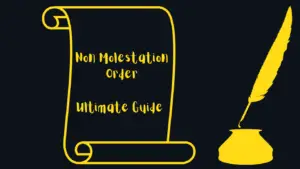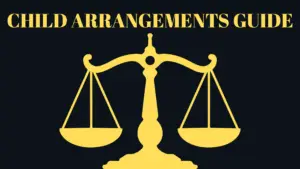When it comes to family law cases in the UK, there’s a bunch of papers that start things off. Think of them like the first chapters in a story. These papers help lay the groundwork, share important info, and help everyone get what’s going on. In this article, we’re taking a closer look at why these papers matter so much in family law cases.
Getting Started: What Are the First Papers in a Family Law Case in the UK?
The first papers in a family law case are super important. They’re like the foundation of a house – everything else builds on them. These papers are a bunch of different forms and letters that help everyone know what’s happening and what needs to be sorted out. They’re like a map that guides the whole process, whether it’s working things out together or going to court.
Breaking Down the Main Papers You Need to Know in family law
1. Starting the Story: Petition or Application
It all begins with someone filing a Petition or Court Application. This is like the opening scene. It’s a formal paper that says, “Hey, there’s a problem we need help with.” It lays out what the problem is and what the person wants the court to do about it.
2. Responding to the Call: Response or Acknowledgement of Service
Once the family law case gets going, the other person (the respondent) replies with a Response or Acknowledgement of Service. This is like their way of saying, “I got the message.” They might agree or disagree with what’s in the first paper.
If you’re responding to a court application as a father, make sure your paperwork aligns with your goals. You may find our guide on C100 Applications and Child Arrangements Orders helpful.
3. Talking About Money: Form E (Financial Statement)
When money stuff is part of the family law process, both sides need to fill out a Form E. This is like showing everyone your money diary. It helps the court figure out how to divide things fairly, like who gets what after a divorce.
While our core focus is on child contact and arrangements, we can still signpost you to trusted professionals if financial proceedings are involved in your case. Don’t hesitate to book a free consultation for tailored guidance.
4. Sharing Different Views: Position Statements
In family law cases, both sides have their say. They write down their thoughts in Position Statements. These are like little notes that explain what each person thinks about the problem. It’s a way to help everyone understand what they want and why.
Position statements are especially powerful in the run-up to hearings like the FHDRA or a Fact-Finding Hearing, where the judge needs to quickly grasp your stance.
5. Sharing the Facts: Witness Statements
Sometimes, in family law cases, there are people who know important stuff about the problem. They write Witness Statements, which are like telling their side of the story. These statements help the court see the facts clearly.
If you’ve been asked to submit one, our expert-led guide on writing a compelling witness statement breaks it down with structure tips, tone guidance, and examples.
6. Following the Map: Case Management Directions
To keep things organised in family law cases, the court gives directions called Case Management Directions. These are like a schedule that says when things need to happen. It’s like setting a timetable for the different parts of the story.
If you’re unsure how to respond to these directions or need support managing deadlines, our team can help you draft clear paperwork for your first hearing and beyond.
7. Kids and Their Needs: Child Arrangements Programme
When kids are part of the family law process, there’s a special program called the Child Arrangements Programme, covered by section 8 of the Children Act 1989. This program helps parents figure out what’s best for the kids. It might involve talking things out or going to court if needed.
We provide professional help for Child Arrangements Order applications and can support you in following the correct process under the Programme.
Why These First Papers Are So Important in Family Law
The first papers in a family law case are like the beginning of a road trip. They show everyone where they’re headed and what they need to do. These papers help both sides know what the problem is, share their thoughts, and work together to solve it. Whether it’s talking, finding common ground, or going to court, these papers make sure everyone knows the plan.
In Conclusion: Starting the Legal Journey in Family Law
Imagine you’re about to start a big adventure. The first papers in a family law case are like the map that guides you. They’re not just pieces of paper – they’re the foundation of the whole story. By sharing facts, stating opinions, and following directions, these papers help everyone work toward a fair and clear solution, whether they’re in a court or trying to sort things out together.
If you’re still figuring out which forms you need — or worried about making a mistake early on — we offer practical support to help you get it right the first time.
🧠 Insider Insight: Lach, our founder, is a qualified social worker who used to write Section 7 reports for CAFCASS — the very reports that influence court outcomes. Now he helps dads respond to them. Learn more about Lach’s background.




